Join an Irish Genealogist on a Walk Through a Graveyard – (#505)
Have you ever walked around an Irish graveyard and wished you knew a little more about what you were looking at? Join our Irish Genealogist as we take you on a tour of a very special historical site in County Louth in Ireland.
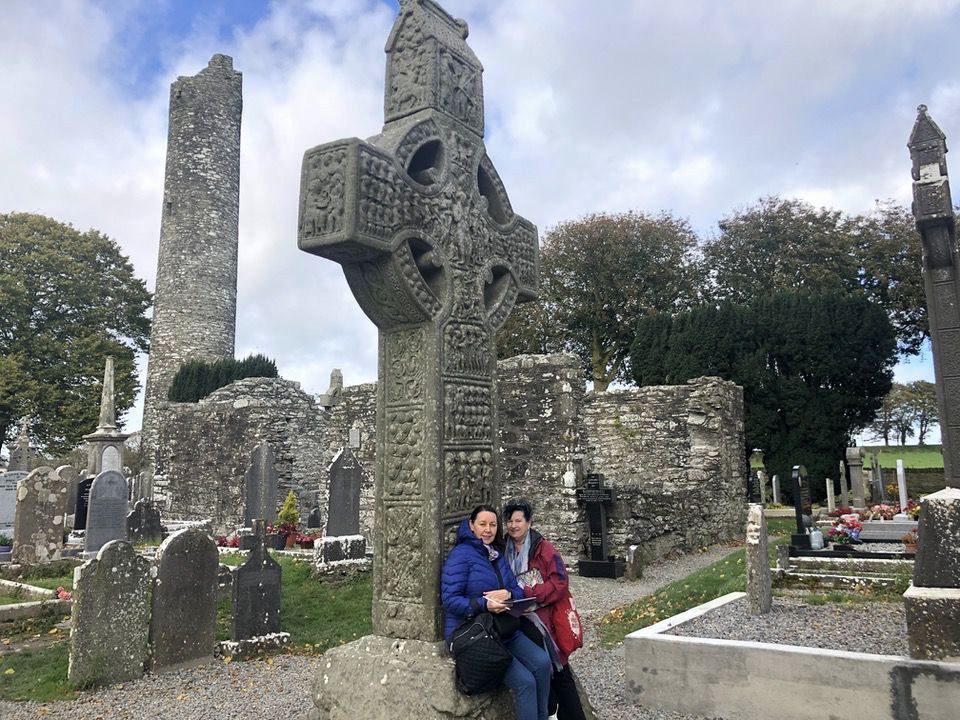
You can listen to the show on your computer/smartphone by clicking on the play button above (the triangle with the circle around it). You can also download the show onto your computer by clicking on the download symbol. Enjoy!
Episode Summary:
Welcome to Season 5, Episode 5 of the Letter from Ireland Show.
Join Mike and our Green Room Genealogist – Jayne McGarvey – on a walk through the ancient Irish monastic graveyard of Monasterboice in County Louth. They discuss the various types of burial sites, Celtic High Crosses and the ancient Round Tower on this very special Irish Heritage Site.
The Letter from Ireland Show is a weekly podcast that goes out each Thursday from our cottage in County Cork. Tune in to this episode – and dive straight in to a bit of Irish caint, ceóil agus craic (conversation, music and craic!).
Transcript
Carina: Céad míle fáilte. Welcome to the Letter from Ireland Show, where we travel in the footsteps of your Irish ancestors, visiting their homelands, and telling their stories, as they put down roots in so many places around the world.
Hello and welcome, Failte Daoibh go léir to the Letter from Ireland Show, series five, episode five. We are recording the show at the end of October, so let me begin by wishing all our listeners a happy Halloween, or as we say in Irish, Oíche shamhna Shona Daoibh. And so, we’re off again, in today’s show around Ireland, where we travel in the footsteps of our Irish ancestors, discovering and sharing what we learn about their lives. And this time, we are visiting a unique place in County Louth. Here, the ancestral story is written in stone. I wonder if you know the place I’m speaking of? Anyway, before we start into the show, I’d like to remind you that you can see all the links in the show notes at aletterfromireland.com/505. So all the links mentioned are in the show notes at aletterfromireland.com/505. And I’ll mention this link again later in the show.
The Celtic season of Samhain is upon us, here in Ireland. And we celebrate this with the excitement of trick-or-treating or dressing up as vampires, ghosts, and generally trying to look as scary as we can. And of course, we eat plenty of Barmbrack. But the history of this celebration goes way back in the mists of time.
Our ancestors celebrated Samhain as one of the ancient festivals of the Celtic calendar. At this time of the year, they believed the veil between the dead and the living is at its thinnest, and it is a time to get in touch and honor the memory of those that have gone before us. Now, I couldn’t think of a better place to visit, at this very special time, than that place I mentioned at the top of the show, where our ancestors’ stories are written in stone. I wonder how many of you have guessed yet where this place is in County Louth? Well, it is the unique graveyard or cemetery of Monasterboice. Maybe you’ve heard of it or visited there yourself. Believe me, it is so much, much more than a graveyard. Monasterboice is about an hour’s drive north from Dublin City and lies a few miles outside Drogheda. Now, why did we pick Monasterboice, or as it’s called in Irish, Mainistir “monastery;” Bhuite or Buite because it is the monastery of the monk Buite.
Well, you’ll discover as the show continues, that it is no ordinary graveyard. It is said that Buite, a follower of St. Patrick himself, founded the site here as a center of learning, way back in the sixth century. Now visiting a graveyard, I realize, might not be everybody’s cup of tea, but seen through the right eyes, it is a treasure trove of information about our ancestors and how they lived. And remember, this place has links way back to before the Vikings. So to help us decipher all that we see around us in Monasterboice, Mike and I were very fortunate to be joined, on this special trip, by our Irish-based genealogist from the Green Room, Jayne McGarvey. Now, Jayne visits graveyards regularly, and we wanted to bring you behind the scenes, and share with you in today’s show, what a genealogist looks for in an Irish graveyard. What are the signs they look out for? What pointers and markers are they seeing? How would an Irish genealogist read an Irish cemetery or graveyard? Why don’t you join us in today’s Letter from Ireland Show, as Mike and Jayne, and myself in the background, make plans to head off to Monasterboice, County Louth, and hear how Jayne McGarvey prepares for a graveyard trip?
Mike: So I’m sitting here with our genealogist, Jayne McGarvey. How are you doing, Jayne?
Jayne McGarvey: Hi, I’m fine, Mike. It’s great to be here.
Mike: Yeah, and what we’re going to do is … I think it’s going to be a very interesting day because our intention is to head to Monasterboice Cemetery in County Louth and ideally produce something, maybe an article, maybe a podcast, that sort of thing. But certainly a lot of conversation around how a genealogist might read an Irish cemetery. So when I say that to you, Jayne, how a genealogist reads … might read an Irish cemetery, is it really that easy? Is it easy to put something together? Are they easy to read?
Jayne McGarvey: About as easy as reading individual genealogies. Every family’s different. Every family has their own quirks, and the same apply to graveyards, Mike.
Mike: So the answer is probably not. Okay. And I suppose, Jayne, from that point of view, so when we’re getting ready to go down to Monasterboice, if you are planning to visit any cemetery, what sort of things would you actually prepare? What sort of things would you plan for before you even leave the house?
Jayne McGarvey: Well, one of the things I do is a little bit of pre-research, Mike. Check whether there are any graveyard records, whether there are plot numbers, a graveyard map. And I prepare my boot of my car: large umbrella, welly boots, good shoes, camera, notepad or iPad, and above all else, preferably a second person to act as a sunblock.
Mike: I was waiting for you to say shovel there, but you didn’t. That’s okay. And the other thing I-
Jayne McGarvey: I’ve been tempted, Mike.
Mike: … The other thing that I’m curious about is you didn’t mention anything about maybe cleaning up stones, and looking at maybe chalk, or grass, or anything like that. Do you tend to do that sort of thing, take readings?
Jayne McGarvey: Any sort of rubbing can be corrosive and can badly damage the stone. Usually, I’ll bring a bottle of rainwater in a spray. I try to avoid soft … even soft cloth. Chalk’s one of the least abrasive subjects, but sometimes just a spray from a drop of rain. Change the angle of the sun, and you’ll get enough from a lot of photographs to piece together the words. It’s a bit of a mix, trying to find out without destroying for future generations.
Mike: That is very interesting because I think that would actually be news to a lot of people who think things like chalk, things like grass, things like that are non-corrosive and not a problem, but very interested to hear that. Thank you for telling us. So Monasterboice itself is not only an example of an Irish cemetery, but it’s a very special one, I guess, in a sense that it’s in the center of a very ancient part of what was the Kingdom of Meath, County Louth at this point. Are we inside Louth? Yes, we’re just inside Louth. And it was a monastic settlement from the year 500s, from the sixth century. So right through to the present, you will find people actually being buried there, even probably up to last week. And alongside that, of course, you’ve got these incredible high Celtic crosses, which I’m very much looking forward to seeing, and a beautiful round tower from the 900s, bang in the center, as well as two very old parish church ruins. So looking forward to when we hit the road. And get ready to go, and see what we find when we get there.
Jayne McGarvey: Let’s do that.
Mike: Off we go.
Carina: Now, it was time to head off. So we piled into the car, and off we went to Monasterboice. It’s not every day that you’re going to find a round tower, high crosses, and two ruined churches in one graveyard. And I, for one, was very excited to see Monasterboice through our genealogist’s eyes. A few miles outside Drogheda, we followed a small country road, leading up to the graveyard, which was surrounded by a neat stone wall. We pulled into the car park opposite the entrance and headed along the gravel pathway, surrounded by tall, swaying trees.
Mike: We’ve made it to Monasterboice, just outside the town of Drogheda, in County Louth. And Jayne, we are here, right outside the cemetery. And you wanted to stop here for a moment to remind us what you typically do when you arrive at a cemetery, an Irish cemetery, for the first time.
Jayne McGarvey: First thing I do, Mike, is take a photograph, showing the gate and preferably the name.
Mike: And why is that? What’s the purpose of that?
Jayne McGarvey: Well, quite often, I can be doing two or three, sometimes even four, cemeteries in one day, and there’s a bit of traveling. Three years later and you want to go back to that cemetery? Which cemetery? What date? Where was it? It’s very easy to find if you’ve got the entrance names, or the picture of the church, with the church name. Easy.
Mike: Ah, yeah. It sounds a bit obvious when you say it, but it’s one of those things we can overlook very, very easily. So when you go to a new cemetery like this, and we’ve made it to the entrance now, where would you go first to actually see what’s what?
Jayne McGarvey: Depending on the size of the cemetery, Mike, I will sometimes head for the highest point or the best viewpoint, just to get an idea of the size, the shape, and I’ve done what I can in background research from Google maps at home, before I come out. And then just orientate myself, get a look at where the sun is, where the shelter is, if need be, whether I’m going to need a brolly to, not hide from the rain, but block the sun to photograph a headstone.
Mike: That’s a good point. Again, I mean, yeah, it’s a beautiful day here today. The sun is shining, but by gosh, is it windy. And maybe it’s time now to find that highest point and head straight towards it. What do you think?
Jayne McGarvey: Good idea, Mike. Let’s go.
Mike: All right. Let’s go. Great.
Carina: We wandered slowly, up through the graveyards, dodging the irregularly placed gravestones, to reach the highest point of the cemetery. And here, we found something very special, indeed. You could say we were almost drawn towards this point from the minute we entered Monasterboice. But why don’t I let Mike tell you more about it?
Mike: What a high point. Isn’t this incredible?
Jayne: Fantastic, Mike.
Mike: Folks, I just wish you could see this at the moment. But the high point in this particular cemetery in Monasterboice, we’re sitting on the steps of the round tower. So we have this round tower from the 900s. It would have been erected at a time when it was still a monastic settlement, before the coming of the Normans. And it would, at times, have actually been raided by the Vikings, for example. But from here, we can see the layout of the actual cemetery. We can … Not only that I guess, but we can see way off miles into the distance, through the trees, which I suppose was the purpose of actually having the round tower just here. We can see two old churches, I believe from the 1400s, and two incredible Celtic high crosses, one of which is about 25 foot tall. Amazing looking. So Jayne, I guess this must be one of the more unique high points when you go to a new cemetery and have a look around.
Jayne McGarvey: Absolutely, Mike. You don’t often find the highest cross in Ireland in too many cemeteries.
Mike: Now having said that, underneath those, I suppose, incredible antiquarian elements, in this particular place, we also have a used cemetery, one that’s used quite to the present day. So what sort of things strike you now that we’re in this highest place, Jayne?
Jayne McGarvey: I think very much the mix of burials, old beside new, or beside more recent, I should say. Real higgledy-piggledy of designs, of writing, Irish, Latin, English. It’s just a pure mix of society.
Mike: I guess it seems to me, as well, that perhaps some people made special efforts because they knew they were in a special place. And maybe they were fairly proud to have their family buried here. But as you say, some of the headstones we passed, up on the way, had Irish, Old Irish, Latin, English on the same headstone. But the whole place seems to be very well maintained.
Jayne McGarvey: Yes, it’s in excellent, pristine condition. We saw the grass being cut earlier, when we first arrived. It’s very, very well looked after.
Mike: In some of the old graveyards, you would expect to see things like lots of unmarked graves, so in other words, just stone markers. Yet here, there’s actually very few of those. And you commented earlier on the actual presence of so many upright headstones, as opposed to horizontal ones. Do you want to say a little bit more about that, or the fact that the horizontal ones are used around here as well?
Jayne McGarvey: Very much a mix, Mike. It depends on where you are. There was certainly a period, certainly towards late end of the 1700s, early 1800s, where there was a lot of body-snatching, and that was for medical science. When they needed fresh cadavers, there weren’t enough, the law didn’t allow for your body to be left for medical science. So graves were robbed. And over the years, different techniques were put in place, in different graveyards, to try and protect the recently buried.
Mike: And what were some of those techniques?
Jayne McGarvey: Well, for some of them, they would have a guard house and guardmen. For others, it would … they would lay the stone flat. Some would be put on columns because as you started to disturb the ground, the column would collapse. And it was much more difficult, then, to dig into the gravestone, or the grave, and remove the body.
Mike: Okay. Well, fascinating. It … excuse me. It’s always fascinating to actually hear those particular social aspects. I believe you want to say something else about that?
Jayne McGarvey: Yes. One interesting fact is the first thing they did when they stole the body was they stripped it of the clothes, and put the clothes back into the grave, and took away the naked body.
Mike: And you’re going to give us the reason for that?
Jayne McGarvey: I am. Theft of clothes could have you transported. Other than that, you were only carting a dead body, a much lesser offense.
Mike: Oh, very clever. People really did look after themselves. Well, we’ll head down, so from this, again, unique perch and maybe have a look at some of those headstones.
Carina: Well, the things you learn about in graveyards when you’re accompanied by a genealogist. It never crossed my mind that the importance of having horizontal gravestones, or columns around your grave to support the gravestone, was in order to deter those pesky grave robbers and keep the bodies safe. Very clever, indeed. And so it was onto learn more about the social history of the times and observe more about those headstones from Jayne McGarvey.
Mike: So here’s a headstone, just maybe a hundred yards from the round tower, and it’s one that particularly grabbed our attention, Jayne.
Jayne McGarvey: It is, Mike. It has Old Irish, Latin, and English, and dates back to 1799. Quite interestingly, in the same plot, the burial comes forward to modern times to 1983.
Mike: So you actually have, essentially, a straight line, so to speak, possibly an awful lot of people in this, what appears to be a double burial area, dating from at least back to 1799 to the present day.
Jayne McGarvey: You have, Mike, and you do … We will get that in some graveyards. You will get a grave, or a series graves, that date back and will actually trace the … almost an entire line of family history in one, small, square area.
Mike: So there we have James Gartland of Drogheda, erected in 1799, over his family burial place. “Pray that they may be met of favorable judgment, amen.” And as you say, just above that then, is more information, in fact a piece from the Bible, in English, Irish, and Latin. So a regular Rosetta Stone. Let’s move on to another one, shall we?
Carina: It’s a long time since I’d seen Old Irish written. And how we knew it was very old Irish was the “H” isn’t included. Instead of the H being used, or a seamhú as we say, you see a dot beside, or over the letter. So keep a look out for those dots over the words, if you see them, and you know then that you’re looking at very old Irish. And you may see some written on gravestones, as we had in Monasterboice. We also noticed, and I thought this was very strange to see, the many ways the stone mason had squashed or abbreviated names and dates, when he ran out of space on the edge of the headstone. But then there were the simpler, irregular, unmarked gravestones. And I wondered how Jayne had read those and I wondered what they told her.
Mike: And we’re onto another grave marker, just here. And it’s so different to the one we just left, which was that one which had the English, Latin, and Irish carved in, dating from 1799. Jayne, can … you describe what’s in front of us here?
Jayne McGarvey: It’s a small, stone marker, covered in moss, no writing. It’s about a foot high.
Mike: Have you ever seen one of these markers before in an Irish cemetery?
Jayne McGarvey: Many times, Mike. They’re very, very prevalent in a lot of particularly older cemeteries and a lot of rural cemeteries as well.
Mike: So they’re, essentially, place markers. And my understanding is that often, different families used different shaped stones to indicate, “Yeah, this is kind of that family or this family.” And I suppose, in some cemeteries as well, you could be lucky and the local council, or somebody else, could actually have an indication of what the plots were.
Jayne McGarvey: Occasionally, yes. It depends on how far back the burial records actually go. If the graveyard was mapped back many years ago, some of the plots may have been identified by families.
Mike: It’s interesting. We were talking earlier there about how often, I suppose, one of … a descendant, or a son, or a daughter might head off to the US or Australia, and then come back at a later date, get the stone, and actually replace with a full, marble tombstone.
Jayne McGarvey: Yes. Or when their parent died, they would have paid … sent money home to pay for the funeral and to pay for a headstone. Sometimes, they identified where the descendant had gone to, as well. So you … I’ve actually seen one with a complete street address.
Mike: Wow. I must say, in my own experience as well, just for example, my grandfather one of them. He died in 1918 and he has a stone marker, which we can’t find by the way. But the point is, in a lot of places, in the … mostly the west of Ireland, at least southwest into the west, people really couldn’t actually afford headstones, up to the introduction of the credit union movement in the 1920s. And thereafter, you saw the real introduction of the headstones.
Jayne McGarvey: Yes. It’s a real mix, Mike. For some families, a headstone was of incredible importance, and they would’ve saved for 40 years, sometimes longer, to pay for a headstone. Other families just put no headstone up, and didn’t want one, wasn’t interested.
Mike: Yeah. Such a mix, as you say. You mentioned the word higgledy-piggledy earlier and that’s it, really. A cemetery is such an organic place, really. And it’s just come about over so many centuries, in this particular case. I think you said there was what? How many years, do you think, of burials here?
Jayne McGarvey: Well, I don’t know for certain Mike, but you could suppose, given the date of the round tower and the churches, there could be a thousand years of burials here.
Mike: A thousand years of burials. Well, let’s have a look at another one, shall we? The wind is picking up here in the background folks, so let’s see how long we can last until the rain comes. But it’s still such a beautiful setting. I think we have a bit in us yet.
Carina: A thousand years of burials. Wow. That comment caught my attention as I walked on this hallowed ground where monks, Vikings, chieftains, and ordinary folk just like ourselves had lived and died for a thousand years. We’d certainly come to the right place with a history of centuries under our feet. There’s an interesting tale about Buite, the monk who founded the monastery here. He was a Scottish saint, but it was said in 480, St. Buite was returning from a trip to Rome, and on his way through Scotland, he raised Nechtan Morbet, the King of Pictland, or Scotland, from the dead. I could see how this story grew legs as I looked at all he had accomplished, here in Monasterboice. As we walked around, we were seeing what a genealogist looks for in a graveyard and how this then informs the genealogist, or anybody really, on the search of their Irish ancestors. Jayne’s reading of Monasterboice gave us a glimpse of all the information available from our ancestors, once we had the keys to read those stories written in stone.
Mike: So we’re walking up through the graveyard here and just looking at some of the stones. We see one here, in fact what Jayne was saying about people coming back from the States and mentioning where they’re from, it’s erected by Michael Rogers, the Rogers family, New York, in loving memory of his sister, Brownstown. Then beside that, we have a Patrick and Thomas Crosbie of Bankerstown. Mulroy. And interestingly enough, the “Mul” of the Mulroy tends to be M-O-L, which indicates that we’re talking about a monastic individual in the first place, given where we are, this is the center of a monastic settlement. We have a Judith Leonard beside that, and Patrick Leonard, of Fieldstown. So we have Leonard, Mulroy, Crosbie, and Rogers. And just above them, then, up in a little bit of a height, we got a large, grave plot. We see a stone in front of it and just behind that, then, “In memory of the Geoghegan family.” Again, another big name from around here and into Meath.
Mike: And one of those things we were talking about earlier as well, we see a stone that was erected just post famine, 1859, by Patrick Cooney of Knockmonagh, in beloved memory of his mother, Mary Cooney. And that extends all the way down, then, to various individuals of the Cooney family, going all the way forward to an Anne Marie Wynne, who died in 1995, all in the same grave plot, would you believe, right beside then … They’re right beside Muiredach’s Celtic cross, one of the most amazing sites in Ireland. A Celtic cross that was actually erected sometime in the 900s. And it is actually named for, I think it’s the actual local …
Mike: Oh it’s a monk. I’m just talking to Carina, here in the distance, yeah. Thanks. And we’re up now to the McGoverns. Then, Jayne, do you want to say something about this particular place here?
Jayne McGarvey: Well particularly this one, there are quite a few crosses and headstones all in the one plot, all belonging to the same family. And you will get that in some graveyards. Some of them are … this one here, it’s very badly worn. You can’t read any names on it at all. A couple of others, you can read. And that’s indicative of some families who have many plots, all adjacent one another, all in the one graveyard. And you can maybe trace a family for a couple of hundred years quite consistently.
Mike: That is fabulous to get that together in the one plot, as you say. And Jayne, I’m just looking at that particular headstone. As you see, it’s actually covered with all sorts of lichen. Actually, I’m just about to stand on top of a horizontal gravestone there, which goes back to sometime in the, maybe the 1800s, is it? It’s kind of hard to tell just there. But there’s an older one, as you see here, a lichen-covered one, which looks like it may have even been moved. Ah, I just noticed, actually, all the writing is on the other side, here. And still, still, it’s so difficult to actually read. How would you, if at all … I mean, I’m feeling it through it. I can feel the grooves in there, but I can’t see much. How would you actually go about, I suppose, extracting some information from a headstone like this one?
Jayne McGarvey: I will usually try just soft rain water, sprayed from a bottle. Chalk is the most … is the least corrosive of subjects of … in subjects where a little bit-
Mike: The least corrosive?
Jayne McGarvey: … The least corrosive. It’s very, very soft. A lot of the rubbings can damage. So as far as reasonably practical, I will try to photograph it from different angles and spray rainwater, not tap water, which I’ll have brought with me. It’s difficult. It’s a difficult one.
Mike: And see what you managed to get at the end. Well, I think we’ll take a photograph of this one anyway and see what we can get out of it. So that’s … there are just some of the actual stones we’re after seeing around here. And we’re surrounded by a lot of more modern ones, of course. And again, it’s a fascinating graveyard … because it is … does cover that thousand years of burials. So you are going from those rocks. Possibly … There’s probably rocks buried six foot under this soil, grave markers, soil upon soil upon soil, right up to the present day.
Carina: Did you hear Mike mention the High Cross of Muiredach? Imagine that there are three of these ancient high crosses, here in this graveyard. Monasterboice was a very important religious center, from the late fifth century, and is most famous for these spectacular sandstone high crosses, which date from around the 10th century of the early Christian period in Ireland. It’s hard to explain the majesty and beauty of these sandstone crosses. They’re finely carved and depict biblical scenes from both the Old and the New Testament. Imagine them as the newspapers or the Internet of their day, telling the story of the Bible to people who couldn’t read or write, like a giant TV set.
Carina: So people were taught about the Bible through these stone picture carvings. And we can still see what our ancestors looked at almost a thousand years ago. The most impressive high cross here is the one that Mike was speaking of, the Cross of Muiredach. And it gets its name from an inscription at the base of the west face, saying it was erected by Muiredach. It’s a monolith, 17 foot high, and is widely regarded as the finest one in Ireland. Looking at the cross, I could make out depictions of the Old Testament. You could see Adam and Eve, Cain slaying Abel, and the last day of judgment. You could spend hours just looking at all the scenes depicted on every inch of the stone on this cross. But it was time to move on and get Jayne’s final reading on this special place here in County Louth.
Mike: Jayne, I understand that was your first visit to Monasterboice. What impressions is it leaving you with?
Jayne McGarvey: Fascinating, Mike. The graveyard is full of layers: generations of names, of places, localities, families. It’s a microcosm of social everything, of just the community at large, different values, different layers of Christianity, with the different symbols. I just find them fascinating. The higgledy-piggledy layout, as well, is … it does … it brings families together of different generations. And you’ll often find, then, the great-greats buried alongside the more current generation, which it’s lovely to see that.
Mike: It sounds like the sort of place you’d like to come back to sometime.
Jayne McGarvey: Yes, I’d come back again.
Mike: All right. Well, Jayne, thank you very much for your time. It was fascinating to get your insight, there, as we wandered around an old, in this case, a very old Irish cemetery.
Jayne McGarvey: One last thing, Mike: take a photograph on the way out.
Mike: Ah, always the genealogist. Got the discipline. Thanks again, Jayne.
Jayne McGarvey: You’re welcome, Mike.
Carina: The wind had whipped up a storm, and it was time to take shelter at a nearby hotel, where some hot food set us up for the long journey home. We headed south and Jayne headed north, but the trip was worth it for the great advice received from Jayne, our Green Room genealogist. She opened our eyes to all that you can learn when visiting an Irish graveyard. We hope that you try these techniques and tips out for yourself when visiting an Irish graveyard in search of your Irish ancestors. We left Monasterboice with a vow to return some sunny day, or perhaps get a visit into the Abbey at Mellifont nearby, which grew in prominence as the fortunes of Monasterboice declined, around the 11th century.
Carina: Ah! But that’s a story for another day. If any of the items we mentioned in the show today catch your attention, you can see the links in the show notes at aletterfromireland.com/505. That’s aletterfromireland.com/505. Til then, everybody, Slán go fóil. Special thank you to Jayne McGarvey, our Irish-based Green Room genealogist, who provided us with great pointers on how to read an Irish graveyard in today’s show.
Carina: Thanks to you listeners for your company on the Letter from Ireland Show, and all our friends in the Green Room, and of course, our readers on the Letter from Ireland, who read our letter each week. I hope, listeners, you’ve enjoyed the show. And if you’d like to know more about your own Irish ancestors and want to connect with us and discover more, I’ll leave a link to the Green Room at the end of the show in the show notes, at aletterfromireland.com/505. Til we chat again, here’s a lovely old Irish blessing. Tóg go bog é.Take it easy. And we look forward to you joining us again next time on the Letter from Ireland Show.
Related Articles and Links
- Not a member of The Green Room yet? You can see more about The Green Room here.
- The latest issue of the Letter from Ireland Magazine is available here.
- “A Letter from Ireland: Volume 3” – is available from Amazon.com here OR Amazon.ca here OR Amazon.co.uk here OR Amazon.com.au here.
- See All Current Available Episodes of the Letter from Ireland Show.
Thank You For Listening
We really appreciate you choosing to listen to us and for supporting the podcast. If you enjoyed today’s show, please share it using the social media buttons on this page.
We would also be eternally grateful if you would consider taking a minute or two to leave an honest review and rating for the show in iTunes. They’re extremely helpful when it comes to reaching our audience and we read each and every one personally!
Finally, don’t forget to subscribe to the podcast in iTunes to make sure that you never miss an episode. Do feel free to leave a comment or question in the section below. We’d love to hear from you!
Slán for now, Mike and Carina.

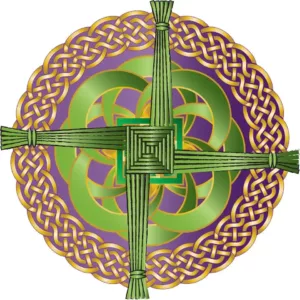
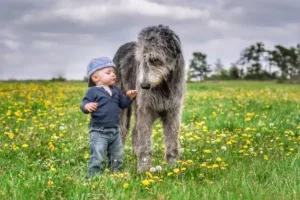
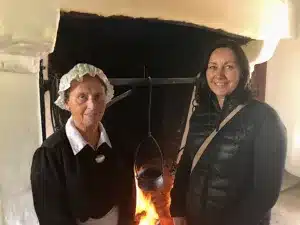
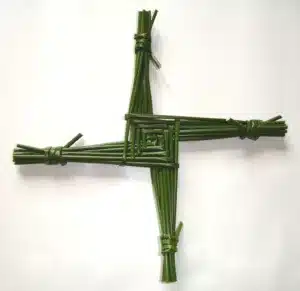
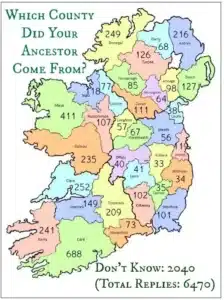
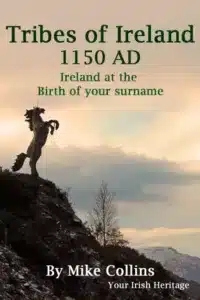
Only Plus Members can comment - Join Now
If you already have an account sign in here.